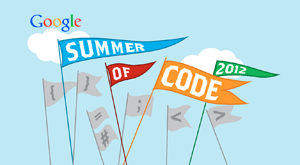 Two international students will spend the summer coding for our open source projects. Through Google Summer of Code™ (GSoC), they’ll earn stipends from Google, plus get a coveted GSoC t-shirt and certificate. Concord Consortium developers will provide mentorship.
Two international students will spend the summer coding for our open source projects. Through Google Summer of Code™ (GSoC), they’ll earn stipends from Google, plus get a coveted GSoC t-shirt and certificate. Concord Consortium developers will provide mentorship.
Single Sign-on for Multiple Projects, Popular Social Media Portals, and LMS Accounts
We run over a dozen exciting projects that offer free science, math, and engineering activities for teachers and students, but they currently have separate logins. That’s a pain when teachers want to use materials from multiple projects. And it can be difficult for teachers and students to embed our materials in their Learning or Course Management System (LMS/CMS).
Single sign-on will make it possible for teachers and students to access all of our resources with a single account (or use an existing Facebook or Google+ account). Plus online course authors will be able to deeply integrate our interactive materials.
Vaibhav Ahlawat will work with Senior Software Developer Scott Cytacki to develop a single sign-on system. Welcome, Vaibhav!
Using WebGL to Accelerate Fluid Dynamics Simulation in the Browser
Combining computational simulations of fluid dynamics with real-time visualizations can be a powerful tool for exploring many scientific topics. We have a mature implementation of a 2D version of this kind in Java called Energy2D, which simulates all three aspects of thermodynamics: conductivity, convection, and radiation.
But computational resources limit the number of cells, the speed of the model, and our ability to integrate radiation and emission well. These same limitations also prevent us from making the simulation 3D.
The WebGL capability available in modern browsers allows us to access to hundreds of parallel computation elements. While these resources are often used for graphics, they can also be used to model physical systems. This project will investigate how the computational fluid dynamics algorithms in Energy2D can be effectively parallelized and how to implement these new or modified algorithms using WebGL-based resources.
Piotr Janik will work with Director of Technology Stephen Bannasch to code an HTML5 version of our Energy2D software. Welcome, Piotr!